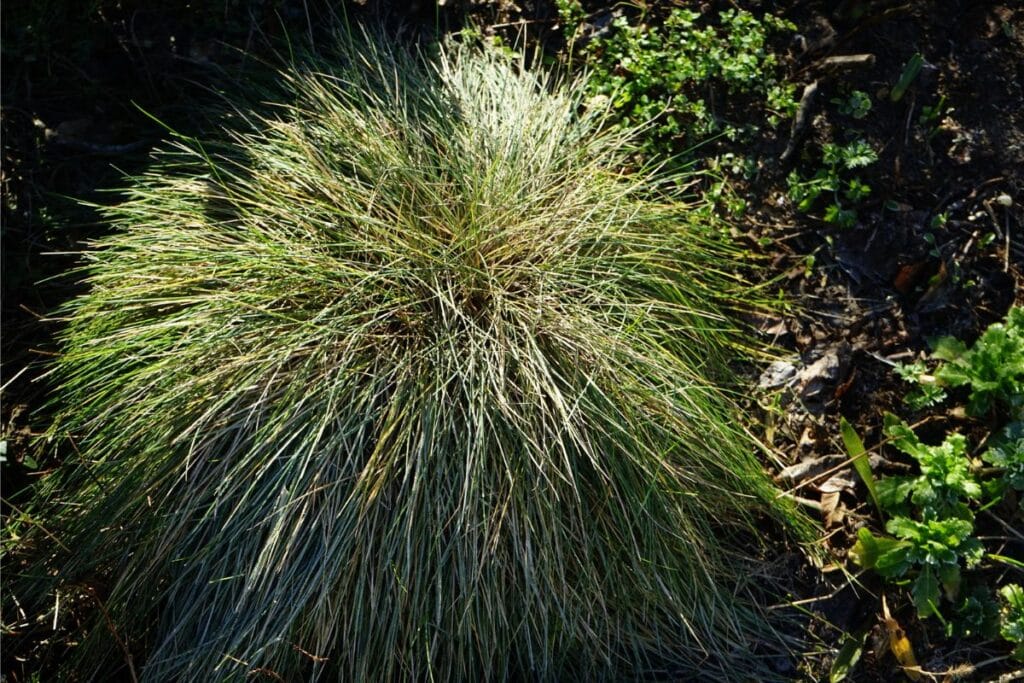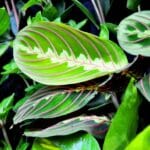Blue fescue (Festuca Glauca) is one of the most popular ornamental grasses used in landscaping projects.
This type of ornamental grass with its blue-gray foliage will add lots of contrast and texture to your garden and it is useful in mass plantings, containers, garden fillers, and ground cover, or it can be used as a border plant.
This blue foliage can look striking all on its own but it will look a lot better if you add plants next to it that are going to enhance the fine texture and striking blue color of this ornamental plant.
In this guide, we are going to take a quick look at some of the best plants to add to your garden if you want to create eye-catching garden scapes.
What to Plant with Blue Fescue
The beautiful blue foliage of blue fescue will look charming next to a great many plant varieties. But for successful companion planting, it is best to select plant varieties that have a similar growing requirement as blue fescue.
Blue fescue grasses look their absolute best when they get plenty of direct sunlight. They prefer full sun and need to be established in well-drained soil. This plant is slightly drought tolerant but it will grow a lot better if it is watered frequently.
Let’s take a look at some other plants that can grow well in these sunny, hot, and moist conditions.
Bush Morning Glory
Bush morning glory (Convolvulus cneorum), also known as silverbush or shrubby bindweed, is a terrific companion plant for blue fescue because the shrub’s silvery green foliage compliments blue-tinted foliage very well.
This busy plant comes in various mixes of shades with colors like white, blue, purple, and light pink flowers that can brighten up your rock garden.
This glorious plant can grow well in poor-quality soil and doesn’t need a lot of fertilizers. They flourish in full sun and can tolerate dry conditions but will need regular watering during dry periods.
These perennials can reach a height of up to 3 feet tall. Since blue fescue only grows up to 18 inches tall, it is best to establish the drought-tolerant grasses in front of, or as a border plant around your bush’s morning glory.
For lots of flowers, it is also best not to fertilize the shrub because this can result in too much foliage and fewer flowers.
Blanket Flowers
Blanket flowers (Gaillardia) are very common in rock gardens because they add plenty of color and interest to a landscape.
The vivid warm tones of these red, yellow, or combination flowers will also look charming alongside the blue-tinted leaves of blue fescue.
The blanket flower is just as hardy as blue fescue. It will grow very well in full sun and well-draining soil that isn’t too fertile. This plant isn’t too fussy about soil type or pH levels but won’t grow well in clay soil types.
The colorful flowers only need to be watered moderately and as such, are ideal for xeriscaping projects or rock garden types.
To create a striking effect, these two plants can be planted in close proximity to one another. These flowers will look charming as they peek out from behind the slightly shorter leaf blades of the blue fescue accent plant.
Blue Daze
If you want to accentuate the blue tone of your blue fescue grass then you should consider pairing them with blue daze (Evolvulus nuttallianus), also known as shaggy dwarf morning glory.
Blue daze produces an abundance of tiny blue flowers that can look very attractive next to your cool-season grass and is very useful as a ground cover or border plant to keep the soil around your blue fescue nice and cool.
This delicate plant needs a minimum of 6 hours of direct sun per day, it grows well in well-draining soil and it requires minimal watering.
These perfect blue fescue companion plants can be mass planted all over your garden along with blue fescue because both plants have a similar height and should look rather striking in mixed garden beds.
Rose Campion

The pink flowers of rose campion (Silene coronaria) will look rather stunning next to attention-grabbing blue fescue. But you can also get this beautiful drought-tolerant plant in other colors like white.
The gray-green leaves of these stalky plants will complement the blue tint of your ornamental grasses very well and the wooly effect of the foliage will add lots of texture to your garden.
This low-maintenance plant will grow well in full sun or partial shade and it can survive in most soil types but it does prefer dry conditions. This plant will survive on natural rainfall watering but might require supplemental watering during extremely dry seasons.
Rose champion can become slightly taller than blue fescue with a maximum height of 15 inches. Because they are so similar in height, you can plant them all over your garden alongside blue fescue plants.
Angelina Sedum
‘Angelina’ sedum (Sedum rupestre ‘Angelina’) is a perfect plant to add to your garden if you want the silver-gray color of your ornamental grass to stand out.
These evergreen shrubs produce vibrant yellow-toned foliage and are helpful as a ground cover to keep the soil moist so your blue fescue can flourish.
During their flowering season, these companion plants will also produce lots of white flowers that can add some interesting color to your garden bed.
Angelina sedum prefers direct sunlight but can also grow in partial shade. This plant can grow in a variety of soil types from poor soils to fertile soils as long as the soil drains properly. Creeping sedums are quite drought tolerant but can also survive with medium moisture levels.
These evergreen shrubs look their absolute best when they are mass planted all over your garden bed. You can choose to add sedums around your blue fescue or grow these beautiful grasses as a border plant next to the blanket of yellowstone crops.
Typically, the plant will stay rather low to the ground but you can keep the foliage topped if you want the evergreen shrub to stay lower than 6 inches.
What NOT to Plant with Blue Fescue
Not all plants will grow well in the same outdoor spaces as blue fescue. Some plants have different growing requirements and others might simply not look attractive next to this type of grass variety.
Here is a quick look at plants you should avoid next to your blue fescue.
Shade Loving Plants
If you place blue fescue plants in the shade, they will survive but the blue tint of the foliage won’t develop as well and the plant can lose its appeal.
Alternatively, if you add shade-loving plants to a sunny spot in your garden, these plants are likely to wilt and die. It is best to avoid growing shade lovers like hostas, ferns, ZZ plants, and anthuriums next to your sun-loving perennials.
Final Thoughts
Blue fescue is a wonderful plant to add to your garden if you want to cut back on water usage or prefer light-tinted garden setups. This type of hardy grass variety can be paired with a number of plant species like lavender, Angelina sedum, rose campion, blue daze, blanket flowers, bush morning glory, and many other perennials.
We hope that our guide made it a little bit easier to find great companion plants to grow with your blue fescue. We also welcome you to have a look at some of our other guides if you want to learn more about other plant varieties that can be paired for a more striking garden.
*image by cristaldream/depositphotos







